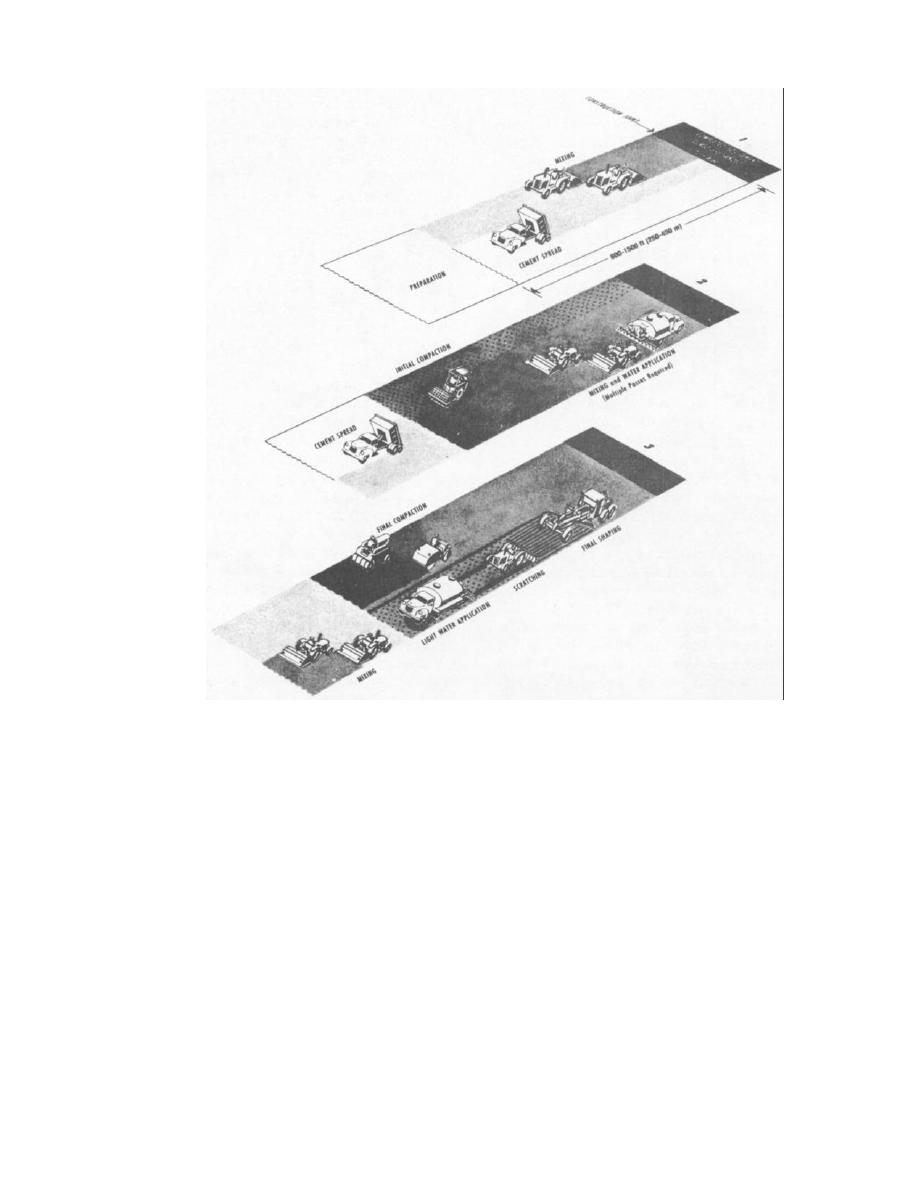
TM 5-822-14/AFJMAN 32-1019
Figure 4-14. Sketch of soil-placement processing operations with single-transverse-shaft mixers.
second lane to serve as a depth guide when placing
generally used for initial compaction except for the
the mix in the second lane. Water spray equip-
more granular soils. Self-propelled and vibratory
ment should be available to keep the joint areas
models are also used. To obtain adequate compac-
damp. The amount of water needed to bring the
tion, it is sometimes necessary to operate the
soil-cement mixture to required moisture content
rollers with ballast to give greater unit pressure.
in continuous-flow-type mixing plants is based on
The general rule is to use the greatest contact
the amount of soil material and cement coming
pressure that will not exceed the bearing capacity
into the mixing chamber per unit of time. The
of the soil-cement mixture and that will still
amount of water required in batch-type central
"walk out" in a reasonable number of passes.
mixing plants is similarly calculated, using the
Friable silty and clayey sandy soils will compact
weights of soil material and cement for each batch.
satisfactorily using rollers with unit pressures of
(3) Compaction. The principles governing com-
75 to 125 pounds per square inch. Clayey sands,
paction of soil-cement are the same as those for
lean clays, and silts that have low plasticity can
compacting the same soil materials without ce-
be compacted with 100- to 200-pounds per square
ment treatment. The soil-cement mixture at opti-
inch rollers. Medium to heavy clays and gravelly
mum moisture should be compacted to maximum
soils required greater unit pressure, i.e., 150 to
300 pounds per square inch. Compacted thickness
density and finished immediately. Moisture loss by
up to 8 or 9 inches can be compacted in one lift.
evaporation during compaction, indicated by a
Greater thicknesses can be compacted with equip-
greying of the surface, should be replaced with
ment designed for deeper lifts. When tamping
light applications of water. Tamping rollers are
4-8


 Previous Page
Previous Page
